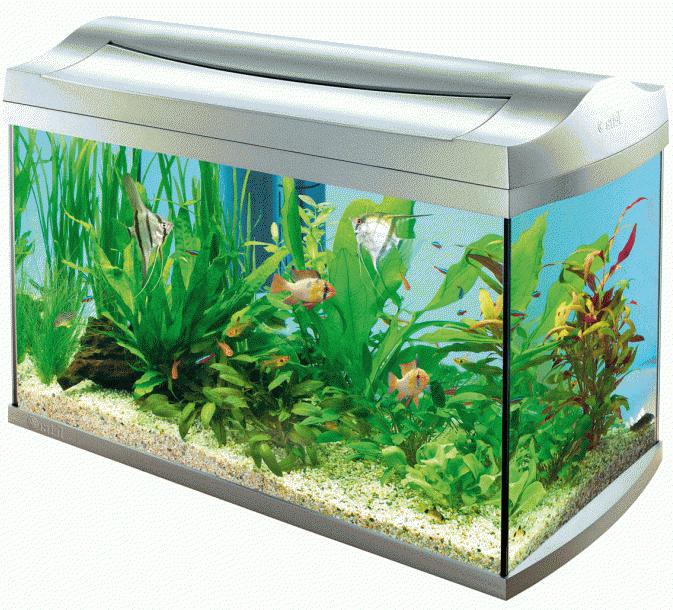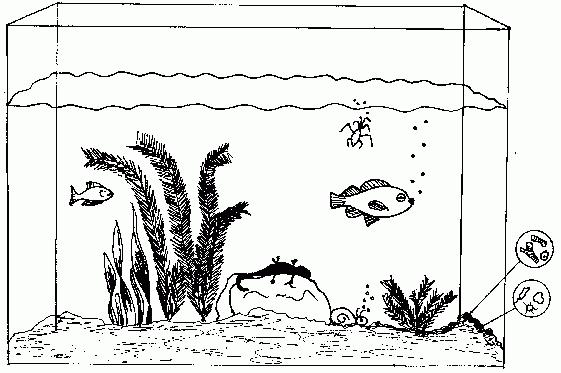The concept of ecosystem is usually applied to natural objects of different complexity and size: taiga or small forest, ocean or small pond. They have complex, balanced natural processes. There are also biological systems created artificially. An example is the aquarium ecosystem, in which the necessary balance is maintained by man.
Types of ecosystems and their features
An ecosystem is a set of living organisms of various species in a particular area of the biosphere that are associated not only with each other, but also with components of an inanimate nature by the circulation of substances and the conversion of energy. It can be natural and artificial.
Natural ecosystems (forests, steppes, savannahs, lakes, seas and others) are a self-regulating structure. Artificial ecosystems (agrocenosis, aquariums and others) are created and maintained by humans.
Ecosystem structure
In ecology, the ecosystem is the main functional unit. It includes inanimate environment and organisms as components that mutually affect each other's properties. Its structure, regardless of species, whether it is an ecosystem of a natural body of water or an ecosystem of an aquarium, includes the following components:
- Spatial - the placement of organisms in a particular biological system.
- Species - the number of living species and the ratio of their numbers.
- Community components: abiotic (inanimate nature) and biotic (organisms - consumers, producers and destroyers).
- The cycle of matter and energy is an important condition for the existence of an ecosystem.
- The stability of the ecosystem, depending on the number of species living in it and the length of the formed food chains.

Consider the example of one of the biological systems - an aquarium. Its artificial ecosystem includes all structural units. In an aquarium of a certain size (spatial distribution), the living component of the system (fish, plants, microorganisms) lives. Its components are also water, soil, driftwood. Aquarium is a closed ecosystem, therefore, for its inhabitants artificially created conditions close to natural. What is lighting used for, since nothing living can fully develop and live without light; thermoregulation - to maintain a constant temperature level; aeration and filtration - for supplying oxygen to water and its constant purification.
Ecosystem differences
At first glance, it may seem that the aquarium ecosystem is not much different from a natural reservoir. After all, the aquarium itself is a kind of small copy of a closed reservoir intended for keeping and breeding fish and plants. Life in it flows through similar biological processes. Only an aquarium is a small artificial ecosystem. In it, the degree of influence of abiotic components (temperature, light, water hardness , pH and others) on biotic components is balanced by a person. He maintains in the aquarium all the necessary vital activities, the duration of which largely depends on the experience of the aquarist, his ability to control the balance of the environment. However, even with proper care, it periodically falls into decline, and a person will have to patiently arrange it again in an indoor pond. Why is this happening?
Causal factors
The aquarium ecosystem depends on the age of its aquatic environment. It goes through the stages of formation, youth, maturity and degradation. Imbalance in the ecosystem can withstand a few plants, and fish cease to reproduce.
A significant role is played by the size of the aquarium. The life expectancy of the environment directly depends on its volume. It is like an ecosystem in nature. It is known that the larger the volume of the reservoir, the greater its resistance to disturbances in the necessary equilibrium. In an aquarium of up to 200 liters, it is not difficult to form a habitat that is close to natural, but it is much more difficult to upset the balance in it with your inept actions.
Aquariums of small capacity up to 30-40 liters require regular water changes. To a reasonable extent, its change to 1 / 3-1 / 5 can shake the equilibrium stability, but the environment is restored after a couple of days on its own, but if all the water is replaced, the established balance can be easily upset.
The aquarist should know that, having formed an ecosystem, it is necessary to maintain equilibrium in it with minimal interference.
Ecological system model
Aquarium is a small artificial ecosystem, the structure of which differs little from the natural one. The components of the ecosystem are the biotope and biocenosis. In the aquarium, the inorganic nature (biotope) is water, soil, their properties. It also includes the volume of the space of the aquatic environment, its mobility, temperature, illumination and other parameters. The necessary habitat properties are created and maintained by humans. He feeds the inhabitants of the aquarium, takes care of the cleanliness of the soil and water. Thus, it creates only an ecosystem model. In nature, it is closed and independent.
Abiotic factors
The natural totality is distinguished by much deeper interconnections and interdependencies. In a home reservoir, they are regulated by humans. Conditionally and in a home reservoir, all living organisms are called aquarium biocenosis. They occupy certain ecological niches in it, creating harmony of habitat. Favorable conditions for life create for them, taking into account abiotic factors - appropriate temperature, lighting and water movement.
The temperature regime depends on the inhabitants of the aquarium. Since even its slight differences can lead to the death of some species of fish, it is recommended to use heaters with a built-in thermostat.
The lighting mode is necessary for the normal functioning of all components of the aquarium environment. Light sources are usually located above the surface of the water. The length of daylight should correspond to the photoperiod of the inhabitants in their natural conditions of life.
In nature, stagnant water is more mobile due to exposure to rain, wind and other disturbances. In the aquarium, a constant circulation of water is necessary. It is achieved by aeration or by passing water through a filter.
Constant circulation provides vertical rotation of water in the aquarium. It also evens out the acidity index and prevents a rapid decrease in the redox potential in the bottom layers.
Organic and inorganic compounds
Water, oxygen, carbon dioxide, amino acids, nitric and phosphoric salts, humic acids are the main organic and inorganic compounds that also belong to abiotic elements. Most of them are contained in the aquarium organisms themselves and in bottom sediments.
The rate of transition of these nutrients to an aqueous solution is ensured by the functioning of ecosystem producers and reducers. Organic nitrogen-containing secretions utilize bacteria, turning them into simpler substances needed for assimilation by plants. Organic compounds pass into the mineral (inorganic) form also due to different types of bacteria.
These most important processes depend on the temperature regime of water, its acidity, and oxygen saturation. They regulate the normal functioning of the ecosystem.
When creating a closed aquarium ecosystem, it is important to know that it is ready to receive its inhabitants, but is not completely balanced, since many important types of bacteria stabilize within two weeks.
Ecosystem Stability and Aquarium Circulation
The inhabitants of the aquarium can not provide a complete cycle of substances. It reveals a break in the chain between consumers and producers. This is facilitated by the closed ecosystem of the aquarium. Shrimps, shellfish, crustaceans (consumers) eat plants (producers), but no one eats consumers themselves. The chain is interrupted. At the same time, another fish food chain - bloodworms and other food - is artificially supported by humans.

It is quite difficult to create conditions for keeping the necessary number of Daphnia and Cyclops in the aquarium for feeding fish. Since these small crustaceans, in turn, also need food. The life of protozoa depends on the presence of organic substances in the aquarium. The number of ciliates should exceed the number of crustaceans, the latter, in turn, should be contained in a greater ratio to fish. It is difficult to achieve such equilibrium in food chains in such spatial conditions as a closed aquarium. Its ecosystem does not contribute to supporting quantitative indicators of
environmental factors at certain levels.
In natural ecosystems, each species is balanced by its relationship with other species. Each of them occupies its own niche, determines the interdependence of species. The proportions of predators and their preys in the development of the ecosystem are strictly balanced. Such balancing cannot be achieved in such a confined space as an aquarium. An artificial ecosystem requires a competent selection of its inhabitants. Ecological niches of fish and plants should be interfaced, but not overlap one another. They are selected so that their necessities of life and the so-called "professions" (consumers, manufacturers and destroyers) are not to the detriment of others.
A balanced selection of inhabitants according to their “professional” purpose in the model of the aquarium ecosystem is the most important condition for its long-term health.
"Address" of the inhabitants of the aquarium
The habitat in the reservoir of each species is also of considerable importance. All of them must find a suitable refuge. You can not oversaturate the aquarium, so as not to lead to the degradation of other species. So, floating plants, growing, block the light for growing algae below, the lack of shelters at the bottom and habitats for bottom fish species lead to skirmishes and to the death of weaker individuals.
It is also important to remember that all animals and plants are constantly changing, which, accordingly, cannot but affect their environment. It is necessary to monitor the behavior of fish, do not overfeed them, take care of plants, cut off their rotted areas, monitor the cleanliness of the soil.
To maintain the stability of the ecosystem in the aquarium, it is necessary, in any attempt to intervene, to consider whether this will harm the balance.